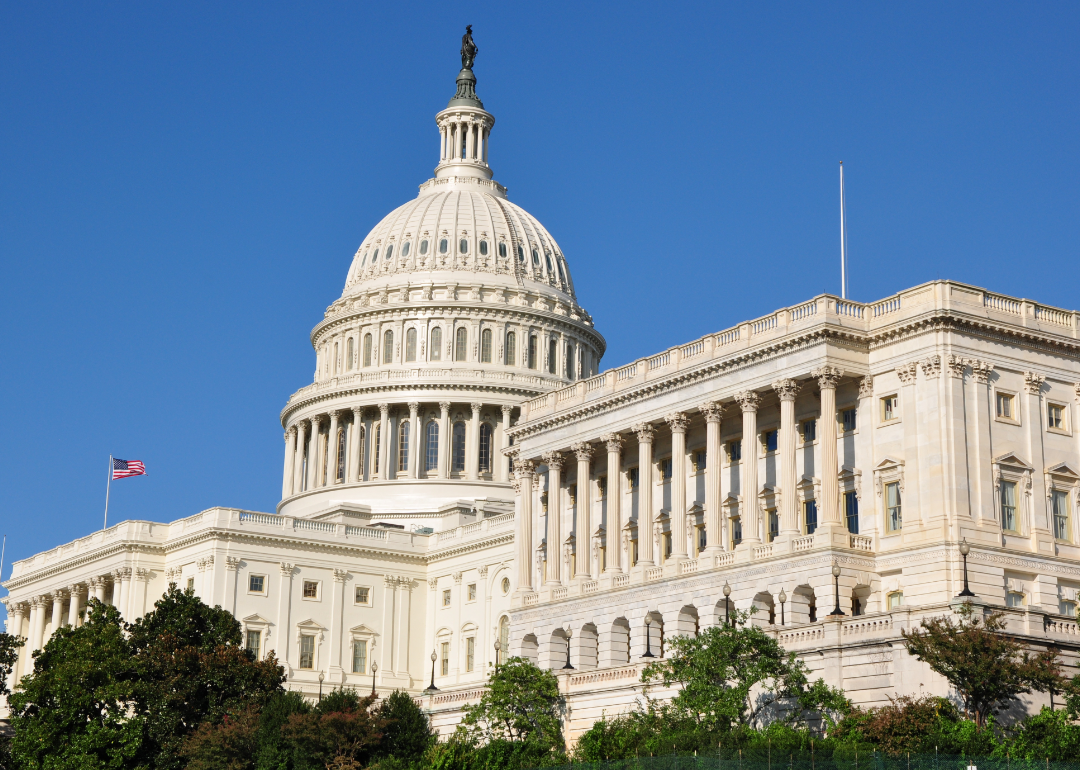
States most affected by government shutdowns
On January 19, 2018, the United States government shut down for three days when congressional leaders were unable to come to an agreement on the Deferred Action for Childhood Arrivals program, federal spending, and immigration. For many Americans, the shutdown was a mere annoyance—one more thing for pundits to lament on cable news programs. It was hardly the first time this has happened, after all: the federal government has shut down in the face of a funding gap 18 times before. This time, the government shut down just before Christmas day, after a spending deal could not be reached Dec. 22. This is now the third government shutdown of 2018, and has extended into 2019.
For those outside of the White House, the shutdown forced their daily lives to grind to a halt. During a shutdown, members of the military stop receiving paychecks until the funding gap is resolved. A lack of staff at the Centers for Disease Control and Prevention makes it difficult for people in need to get flu shots and other public health treatments. Taxpayers may not be able to get the help they need from the IRS, and federal loan applications for small businesses, rural communities, and prospective homeowners are frozen altogether.
To paint a clearer picture of how government shutdowns affect each state, Stacker referenced WalletHub data collected from the U.S. Census Bureau, U.S. Bureau of Labor Statistics, usaspending.gov, Fit Small Business, National Association of Realtors, National Park Service and the Kaiser Family Foundation. WalletHub calculated the effect of the government shutdown on six metrics: federal jobs as a share of total state unemployment, federal contract dollars per capita, the percentage of children under the Children's Health Insurance Program, small business lending, real estate as a percentage of the gross state product, and access to national parks. The weighted average of those scores reveals the overall impact of government shutdowns on each state; we've included the number of federal employees in each state as of September 2017 as additional context.
Read on to discover the states where government shutdowns have the biggest impact.
#51. Minnesota
Affected index: 13.31
Federal employees: 32,343
#50. Michigan
Affected index: 13.79
Federal employees: 52,617
#49. Indiana
Affected index: 17.93
Federal employees: 37,913
#48. Delaware
Affected index: 19.51
Federal employees: 5,748
#47. Ohio
Affected index: 20.64
Federal employees: 78,369
#46. Tennessee
Affected index: 22.15
Federal employees: 48,873
#45. Iowa
Affected index: 22.92
Federal employees: 17,792
#44. Illinois
Affected index: 23.49
Federal employees: 79,588
#43. North Carolina
Affected index: 24.15
Federal employees: 72,427
#42. North Dakota
Affected index: 24.49
Federal employees: 9,421
#41. Vermont
Affected index: 24.92
Federal employees: 6,942
#40. New Hampshire
Affected index: 25.13
Federal employees: 7,617
#39. South Carolina
Affected index: 25.24
Federal employees: 33,610
#38. Kansas
Affected index: 25.59
Federal employees: 25,081
#37. Florida
Affected index: 26.19
Federal employees: 138,913
#36. Nebraska
Affected index: 26.41
Federal employees: 16,915
#35. Louisiana
Affected index: 26.74
Federal employees: 31,001
#34. Wisconsin
Affected index: 26.78
Federal employees: 29,012
#33. Nevada
Affected index: 27.01
Federal employees: 19,158
#32. New Jersey
Affected index: 27.38
Federal employees: 49,200
#31. Connecticut
Affected index: 27.62
Federal employees: 18,048
#30. New York
Affected index: 27.66
Federal employees: 115,407
#29. Missouri
Affected index: 28.05
Federal employees: 54,542
#28. Kentucky
Affected index: 28.10
Federal employees: 36,598
#27. Pennsylvania
Affected index: 30.53
Federal employees: 97,125
#26. Oregon
Affected index: 30.58
Federal employees: 29,028
#25. Arkansas
Affected index: 30.86
Federal employees: 19,995
#24. Wyoming
Affected index: 31.06
Federal employees: 8,027
#23. Washington
Affected index: 31.57
Federal employees: 75,306
#22. Georgia
Affected index: 31.74
Federal employees: 100,855
#21. South Dakota
Affected index: 32.04
Federal employees: 11,444
#20. Utah
Affected index: 32.72
Federal employees: 36,037
#19. Idaho
Affected index: 32.74
Federal employees: 13,805
#18. Massachusetts
Affected index: 33.74
Federal employees: 46,138
#17. Arizona
Affected index: 33.84
Federal employees: 56,344
#16. Texas
Affected index: 36.85
Federal employees: 198,851
#15. Maine
Affected index: 37.37
Federal employees: 15,396
#14. West Virginia
Affected index: 38.22
Federal employees: 23,695
#13. Mississippi
Affected index: 38.54
Federal employees: 25,332
#12. Rhode Island
Affected index: 39.92
Federal employees: 10,961
#11. Colorado
Affected index: 41.80
Federal employees: 53,974
#10. Alabama
Affected index: 42.33
Federal employees: 53,066
#9. California
Affected index: 44.37
Federal employees: 248,809
#8. Oklahoma
Affected index: 45.65
Federal employees: 48,009
#7. Montana
Affected index: 47.96
Federal employees: 13,932
#6. New Mexico
Affected index: 48.87
Federal employees: 29,426
#5. Hawaii
Affected index: 51.86
Federal employees: 33,271
#4. Alaska
Affected index: 58.29
Federal employees: 15,401
#3. Virginia
Affected index: 67.67
Federal employees: 177,527
#2. Maryland
Affected index: 70.41
Federal employees: 146,540
#1. District of Columbia
Affected index: 70.42
Federal employees: 198,618



